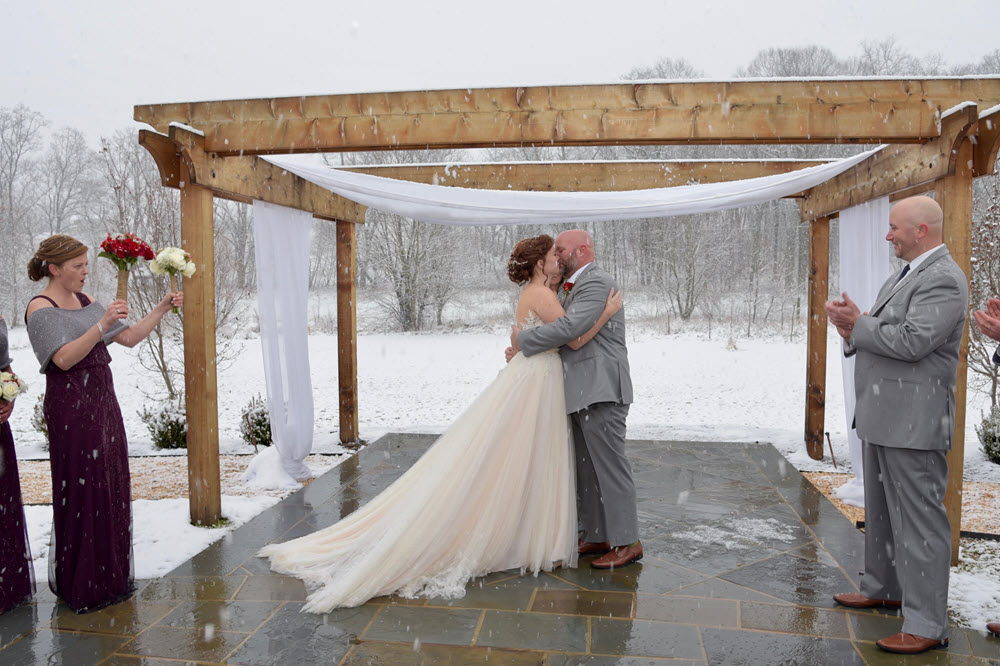By Melanie Walker
Are you excited to start planning your wedding but unsure what to tackle first?
At Zion Springs, we’ve been hosting weddings since 2010 and are committed to educating couples on how to start planning confidently.
In this guide, we’ll cover five essential steps—from setting your budget to creating your guest list—that will give you a solid foundation for a smooth and enjoyable planning experience.
Step 1: Evaluate Your Wedding Finances
Every wedding begins with an understanding of what you’re comfortable spending. Before you get swept up by dazzling decor ideas or gourmet food options, it’s important to determine your overall wedding budget.
Whether you cover the costs or split them with family members, having an open discussion helps avoid misunderstandings later on.
Set up a basic spreadsheet to track and adjust expenses as your budget evolves. It's also helpful to familiarize yourself with typical costs in your area so you know what to expect.
Essentials vs. Luxuries:
Start with the essentials, and consider luxuries if your budget allows:
Step 2: Decide Who Makes the Wedding Guest List
Your guest list shapes the atmosphere of your wedding, whether you're envisioning an intimate gathering or a lively celebration.
Here’s how to get started:
- Visualize your day: Decide if you want a close-knit dinner or a larger event.
- Draft the list: Start with immediate family and closest friends, but be prepared for tough decisions as you refine it.
- Consider your budget: Each guest adds to the cost, so balance your list to avoid post-wedding financial stress.
- Manage dynamics: Be mindful of potential conflicts between guests to keep the day harmonious.
- Prioritize & organize: Sort guests into categories like 'Essentials,' 'Love-to-Haves,' and 'Bonus Guests.'
- Refine as needed: Adjust your list with venue size and budget in mind, but try not to get stuck in constant revisions.
Step 3: Choose the Best Season & Dates for Your Wedding
A wedding date often holds personal meaning, but seasons can influence everything from venue availability to decor options.


Spring Weddings: Enjoy blooming flowers and mild weather—perfect for outdoor or garden ceremonies.


Summer Weddings: Bright skies and long days make it ideal for vibrant garden or vineyard celebrations.


Fall Affairs: Take advantage of the rich, warm tones of autumn for a rustic wedding feel.


Winter Weddings: Opt for cozy indoor venues with a magical, snow-covered backdrop.
Step 4: Bring Your Wedding Vision to Life
Every couple's story is different, and your wedding should reflect that. Start by exploring themes and styles that resonate with you. Are you adventurers at heart dreaming of a forest wedding? Or city lovers planning a rooftop soirée?
To bring your vision to life, focus on these elements:
Personal Touches
Incorporate details from your relationship. Did you meet at a coffee shop? Coffee bean centerpieces or a latte art station could be the perfect nod to your story.
Vision Board
Create a vision board to capture your style. Browse bridal magazines, blogs, and Pinterest to pull together a palette, décor, and gown ideas.
Trending vs. Timeless
Trends can add freshness, but timeless elements—like classic A-line dresses and neutral tones—will keep your wedding photos from feeling dated.
Vendor Synergy
Use your vision board to communicate with vendors. They might suggest ideas you hadn't considered, making your wedding vision even clearer.
Step 5: Delegate Tasks for Smooth Wedding Planning
Wedding planning isn’t a solo mission. Involving others in the process lightens your load and brings fresh ideas and support. Whether it's your partner, family, or close friends, assigning specific tasks helps keep everything on track.
Consider these practical delegation ideas:
- Assign roles: Give family members or friends clear tasks, like managing RSVPs, coordinating with vendors, or overseeing guest transportation. For example, ask your organized friend to handle communication with the venue.
- Create a task calendar: Set up a shared calendar with deadlines for each responsibility. Tools like Google Calendar or a wedding planning app can help keep everyone on the same page. This avoids last-minute scrambling and makes sure no detail is overlooked.
- Leverage talents: Identify friends or family with special skills that can contribute to the day. If someone has a knack for flowers or photography, ask if they’d like to help.
- Hold a pre-wedding meeting & stay connected: Organize a meeting with your team to review responsibilities and confirm everyone’s roles. Use group chats or shared calendars to keep everyone updated on any changes or last-minute tasks.
Wrapping Up Your Wedding Planning Foundation
Planning a wedding can feel like a whirlwind of decisions, but with a clear plan, everything becomes much smoother. In this guide, we’ve outlined essential steps to help you get started: budgeting, building your guest list, selecting the perfect date, shaping your wedding vision, and delegating tasks.
As an all-inclusive wedding venue in Northern Virginia, we're well-placed to guide couples through every planning stage. We’re here to provide the knowledge and support to make the process enjoyable and stress-free.
For more insights and expert tips, visit our Answers and Advice page to explore the resources available for your wedding planning journey.


Why You Can’t Always Trust The Knot & WeddingWire Vendor Rankings


Laura and Colin’s Spring Wedding


Who is an All-Weekend Wedding a Good Fit For?










